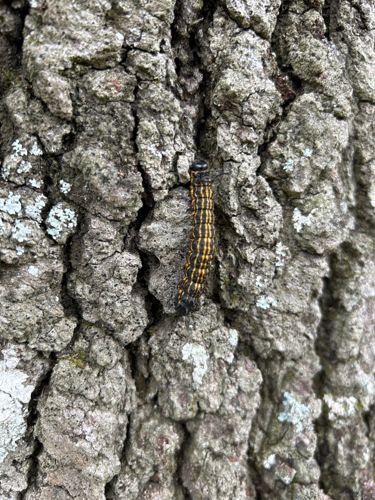Fall Webworm
Scientific Name: Hyphantria cunea
Order & Family: Lepidoptera, Erebidae (formerly Arctiidae)
Size: Fall webworm caterpillars typically range from 1 to 1.5 inches (2.5 to 3.8 cm) in length when fully grown.

Natural Habitat
Found in deciduous and sometimes evergreen trees, particularly in orchards, ornamental plantings, and natural woodlands throughout North America. The silken webs are very conspicuous on tree branches.
Diet & Feeding
Primarily foliage of a wide variety of deciduous trees, including pecan, mulberry, black walnut, sourwood, persimmon, and fruit trees. They are generalist herbivores.
Behavior Patterns
The fall webworm caterpillar lives in communal silken webs spun on tree branches, which can grow quite large. They feed within the protection of these webs, expanding them as they consume leaves. As they mature, they disperse from the web to pupate in the soil or leaf litter.
Risks & Benefits
Potential risks include defoliation of trees, especially during severe outbreaks, which can weaken or stress the trees. This is primarily an aesthetic issue for ornamental trees. Benefits are minimal to humans but they are part of the natural food web, serving as a food source for birds and parasitic insects.
Identified on: 9/1/2025